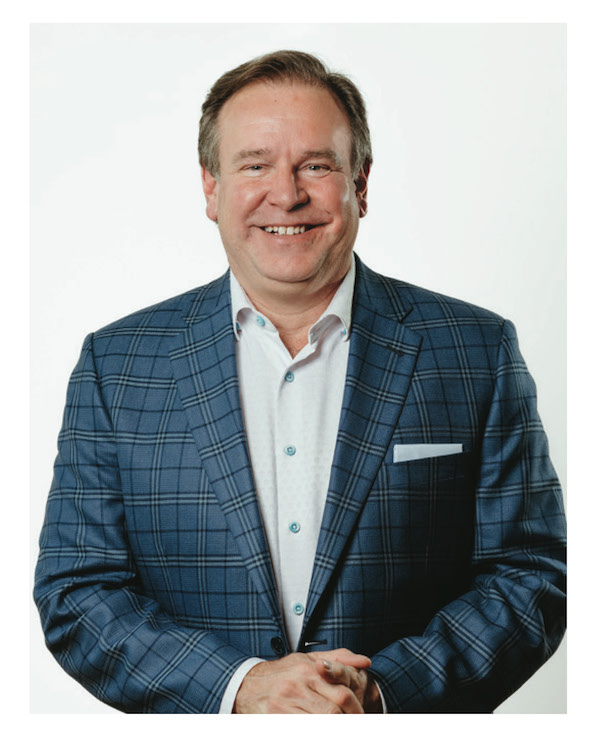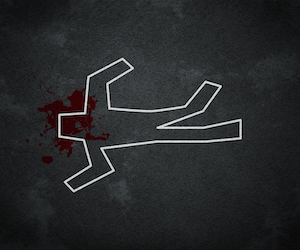By Doug Elms
It was a summer evening, and I was working an off-duty gig near downtown Little Rock, Arkansas, at a time when it was known as “The Most Dangerous Small City in America.” The shift had been fairly quiet, and I hoped to end it without incident. Suddenly, the evening air was pierced by a gunshot. It sounded like it was a couple of blocks away, so I started sprinting in that direction.
As I got closer, I could hear shouting and screaming coming from the front of a hotel. I wasn’t sure at the time, but I was witnessing an armed robbery where four men were accosting a newlywed couple. The bride was in her wedding gown, and the groom a tuxedo. I could see the suspects running across the highway, coming my way. I positioned myself to intercept, and when they got there, I identified myself and shouted at the suspects to get on the ground. Three of them complied, but one feigned compliance, shooting me instead.
I had missed a critical warning sign. Instead of looking at the ground as he pretended to comply, one subject looked at me as he bent over, deftly pointing his gun my way.
I mostly recovered from the wounds I sustained that night, both physical and emotional. But that incident made me think more deeply about violent crime and how poorly equipped we were to reduce it. I asked myself if anyone had the answer to preventing targeted violence.
My answer would come from a most unexpected source.
After working for a time in a desk sergeant role, I decided to leave the PD, taking a job managing security for a private concern. The year was 1992, and a governor from our small state had risen to popularity nationwide in a bid for the presidency. His name was Bill Clinton.
In the campaign’s closing months, I functioned as a liaison to the United States Secret Service, assisting with the security of the future president. During that time, I watched in awe as the Secret Service did the hard work of keeping a public official safe, especially in a crowded environment like downtown Little Rock on election night.
The agents gathered protective intelligence, conducted thorough advances of all locations, assessed the numerous daily threats, and worked to de-escalate so that no attacker got close enough to try. This was a radically different approach to the strategies I’d learned as a law enforcement officer, where most of our job was reacting to problems after the fact. But the Service was looking for signs that gave an advanced warning of violence.
Maybe someone did have an answer to preventing targeted violence.
In 1993, I was recruited to what would soon become the world’s largest company for a position in Loss Prevention. Rapid promotions would follow for the next few years until I became a founding member of Walmart’s Global Security efforts. Protecting people and places across the planet exposed me to more than I could have ever imagined walking a beat in Little Rock.
I learned that the warning signs of a natural disaster were different than those of a terrorist attack, which were different than a threat against the CEO, but that there were always warning signs.
Then I met Gavin de Becker.
De Becker is a best-selling author whose work in predicting violence has earned him three Presidential appointments and acclaim as the nation’s foremost expert in this area. I had an opportunity to study under him multiple times. He opened my eyes to the well-established warning signs of violence, which allow you to predict what may happen next. He also introduced me to best practices in mitigating, de-escalating, and preventing acts of destruction.
My work enabled me to protect dignitaries, internationally known political figures, celebrities, CEOs, and billionaires. I spent 24 years keeping these folks safe. Then something started to nag at me.
Who was keeping everyone else safe?
That’s why I started SafeHaven Security Group. I knew I could bring Threat Assessment and Management (TAM) to people and organizations nationwide. Why should these effective methodologies be used only for the rich and famous? Why couldn’t we apply the same principles that the Secret Service uses to protect the president and help small businesses keep their people safe? We can, and we have.
Because it’s not about sidearms and sunglasses; it’s about mindset and methodology.
The Secret Service tracks threats against the president every single day. Yet, when was the last time there was an actual attempt? Reagan. 1981. I’d say that’s proof that TAM works.
My experience echoes the success of the Secret Service. In the decades since my colleagues and I have followed TAM protocols, we have kept targets safe 100% of the time. Sure, we’ve had some near misses, but those were when the client didn’t fully follow our recommendations.
At SafeHaven Security Group, we manage threats of all kinds, including domestic violence spillover into the workplace, disgruntled employees, and active shooter. We also offer robust training in preventing mass shootings, verbal de-escalation, safe terminations, and much more.
As weird as it sounds, getting shot set me on the path to where I am now, helping keep both the rich and famous and regular folks like you safe at work, home, and as they travel. I’m almost grateful.
Please reach out if we can help keep your organization safe from violence. Even if it’s an active threat case, your initial call to me or one of our experts is always free.

Doug Elms, Founder and Principal Consultant
Safehaven Security Group
doug@safehavensecuritygroup.com
www.safehavensecuritygroup.com
